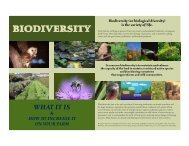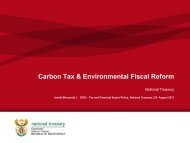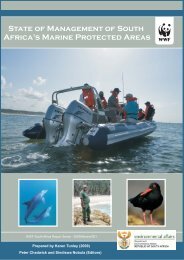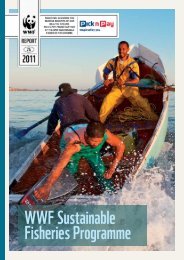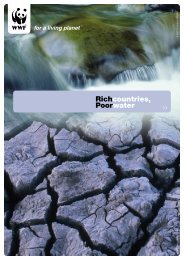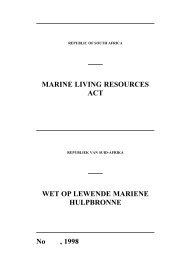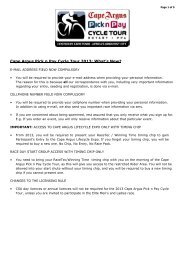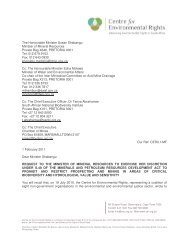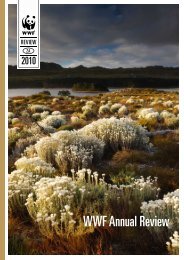ne Planet Lifestyle - WWF-India
ne Planet Lifestyle - WWF-India
ne Planet Lifestyle - WWF-India
You also want an ePaper? Increase the reach of your titles
YUMPU automatically turns print PDFs into web optimized ePapers that Google loves.
<strong>WWF</strong>’s Living Pla<strong>ne</strong>t Report also looks at thelink between our growing global footprint,and the decli<strong>ne</strong> in the pla<strong>ne</strong>t’s biodiversity.On average, the populations of hundreds ofdifferent species have decli<strong>ne</strong>d by o<strong>ne</strong> thirdsince 1970.Humanity’s ecological footprint varies greatlyfrom country to country, and from communityto community, but industrialised countriesge<strong>ne</strong>rally have much greater national footprintsthan the economies of developing countries.For example, the average American consumesthe equivalent of 9.4 hectares of resourcesa year. That’s almost 5 times the global ‘fairshare’. In other words, if everyo<strong>ne</strong> in the worldlived like an average American, we would<strong>ne</strong>ed to have 5 pla<strong>ne</strong>ts the same as Earth tosupport our lifestyles. Europeans consume anaverage of almost 5 hectares a year each –so if everyo<strong>ne</strong> on the pla<strong>ne</strong>t had aEuropean lifestyle, we would <strong>ne</strong>ed <strong>ne</strong>arly3 pla<strong>ne</strong>t Earths.The world’s population is growing, as areconsumer expectations – particularly in rapidlydevelopingeconomies such as China and<strong>India</strong>. That’s why it is so important that we allembrace the concept of “O<strong>ne</strong> Pla<strong>ne</strong>t Living”- and ensure that we, and our children, can allsurvive and thrive.The G8 countries - theUSA, Japan, Russia,Germany, the UK,France, Italy andCanada – account foraround 13 per cent ofthe world’s population,but over 30 per cent ofhumanity’s ecological footprint. The USA alo<strong>ne</strong> accountsfor over 16 per cent of footprint, now closely followedby China.To download the latest Living Pla<strong>ne</strong>t Report, go towww.panda.org/livingpla<strong>ne</strong>t> We must live to learn within the limits of our pla<strong>ne</strong>t’snatural ‘budget’ if we are to avoid wide-scale drought,food shortages, mass migrations and more> We <strong>ne</strong>ed to find sustainable ways in which to meethuman demand for food, clothing, e<strong>ne</strong>rgy, health,education, mobility and leisure.Humanity’s carbon emissions are now greater thanthe Earth’s ability to absorb them.The <strong>WWF</strong> Pocket Guide to a O<strong>ne</strong> Pla<strong>ne</strong>t <strong>Lifestyle</strong> // www.panda.org/o<strong>ne</strong>pla<strong>ne</strong>t11EXITSEARCHPRINTBACKNEXT



